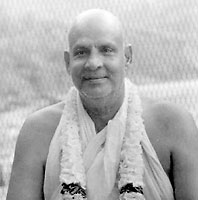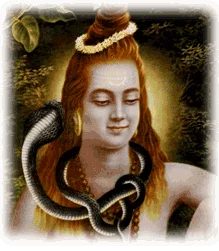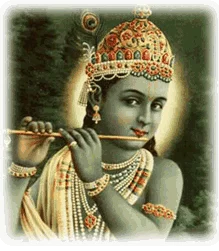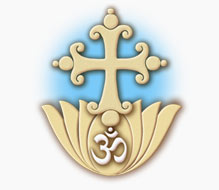
Vairagya is the opposite of raga (attachment). Vairagya is dispassion. Vairagya is detachment. Vairagya is indifference to material enjoyment here and hereafter. It is the second item in sadhana-chatushtaya–viveka, vairagya, shadsampat and mumukshutwa.
Vairagya is born of viveka, or discrimination between nitya and anitya (eternal and non-eternal), sat and asat (real and unreal), tattwa and atattwa (element and non-element). Viveka comes through selfless service done in several births and through puja and aradhana (worship and adoration of God), and through the grace of the Lord. From viveka is born vairagya. It gives spiritual strength.
A man of vairagya has no attraction for the material world. So vairagya is a supreme, inexhaustible wealth for spiritual aspirants. Vairagya aids concentration of mind, (Samadhana) and generates burning mumukshutwa, or strong yearning for liberation or emancipation, or Release.
Raga is attachment to objects. Wherever there is a little pleasure, there is raga. Wherever there is pain, there is dislike. Like and dislike are interrelated. Raga-dwesha is also one of the important afflictions, according to Patanjali Maharshi. The five afflictions are avidya (ignorance), asmita (egoism), raga-dwesha (like and dislike) and abhinivesha (clinging to life). First, there is ignorance, the original avidya. From this is born egoism, asmita, and from asmita is born raga-dwesha, and from raga-dwesha, abhinivesha, or clinging to this life.
Types of vairagya
Vairagya is of different types or degrees–mridu, madhyama and teevra (mild, moderate and intense). Only intense vairagya will help the aspirant to stick to the spiritual path. So the aspirants should be careful. Even though their vairagya is of a mild type, they should try to make it moderate and then intense.
Vairagya comes through looking into the defects of material life. Material happiness is not real happiness. It is illusory, transient, impermanent. It is mixed with pain. So, again and again by looking into the defects of material life, vairagya dawns. It should be strengthened through study of spiritual books, satsanga, vichara (discrimination) and enquiry.
Need for enquiry
Vairagya should be born of discrimination, enquiry and analysis. By these, the mind is weaned from material enjoyments and rendered subtle–only this is lasting vairagya. Again and again you will have to make enquiry. External deprivations do not constitute real vairagya. Real vairagya should come from enquiry, vichara. “All these material objects do not give us lasting happiness. They lead us into pain and sorrow.” Such deep enquiry, again and again persisted in for a very long time, produces lasting vairagya.
Vairagya is the real wealth for an aspirant. It helps him to do real sadhana. It makes the mind introverted. Vairagya puts a brake to the extroverted tendency of the mind. Even if the mind runs towards objects, at once vairagya will point out that there is pain there, that such enjoyment is the cause for rebirth and intense suffering. So the mind is bridled, and gradually through intense practice it is established in real, lasting, sustained, intense vairagya.
Vairagya is of two grades: para (supreme) vairagya and apara (relative) vairagya. Para vairagya comes after we attain self-realization. The whole world then appears like a straw. This gives intense spiritual strength.
An essential prerequisite
Without vairagya there cannot be any real spiritual progress. In Vedanta it is the only vital, fundamental sadhana. If you have vairagya, all other virtues will come by themselves. Patanjali Maharshi says: Abhyastavairagyabhyam tannirodhah–“The mind is controlled by meditation or sadhana and vairagya.” They are the two wings of the aspirant to soar high into the realm of the Immortal Abode. The same thing Lord Krishna also says: Abhyasena tu Kaunteya, vairagyena cha grihyate–“The mind is controlled by practice and dispassion and intense detachment.” By vairagya the mind is detached. He who works in a detached way is not bound by karma (action). So it is the aspirant’s duty to cultivate this one virtue, or sadhana-anka-vairagya.
Mental disposition
Vairagya is, doubtless, a mental state whereby the mind does not run into material or material grooves. It moves towards the Atman, towards God. By external appearance you cannot tell that one has vairagya. Vairagya is a mental disposition–detachment and indifference born of viveka.
“Golden Medium”
Lord Krishna says that He is not in favor of extreme asceticism: “They torture all the elements in the body and Me also who dwell in the body.” Lord Buddha also tortured his body in the beginning, but later on found out that he made little if any spiritual progress. The body is an instrument for attaining self-realization. So you should not torture the body. Whatever is truly needed for the body, you should provide. God has given you common sense. So you should practice common sense sadhana. The thing is you should not give too much leniency to the mind. It will hurl you down. Always be watchful. Be eternally vigilant.
Common sense approach
Vairagya is necessary, but too much of it will produce a dilapidated constitution. You will then have no progress in sadhana. So use your common sense and have whatever you require. This is my doctrine. Train the stomach in different ways. In Bhagavad Gita 17:8, Lord Krishna says clearly that the food should be flavorful, smooth (oleogenous), substantial and satisfying. One should take wholesome food. One should not get attached to food, nor should one be particular about select dishes. You should eat to live, not live to eat. The stomach should not be made sensitive by a continuously bland diet. Occasional fasting is good. Impure, intoxicating and non-vegetarian food should be avoided. Whatever you take, it must be digested. Thus you will have no difficulties. Wherever you go, you will have perfect balance and your constitution can function under different climatic conditions and on different kinds of food. That is common sense discipline.
How to develop vairagya
By looking into the defects of material life and reading books on vairagya, lives of saints, Bhartrihari’s Vairagya Shataka, and the Vairagyaprakarana in the Yoga Vashishtha, dispassion should be cultivated. These will increase your desire for liberation and your conviction in spiritual life. Advanced students should not think that they have attained self-realization and that they need not study these books. These books are important to neophytes, middle students and advanced students, too. You should study our own publication How to Get Vairagya. If you are established in vairagya, the superstructure of samadhi, ritambharaprajna (truth-consciousness) will be duly attained. So let us remember all these points, and cultivate paravairagya, real vairagya born of viveka, vichara and enquiry. Otherwise, you will only remain half-aspirants.
May the Lord grant you all paravairagya! May you all be established in vairagya. It is the only vital, fundamental sadhana for all people to get themselves established in their inner Self whose swarupa is vairagya, whose swarupa is sannyasa, whose swarupa is nivritti
Behold! Listen! Come! There is a way to the immortal abode. There is a way to the supreme happiness. There is a way to the fourth state. There is a way to the fourth dimension. Follow the way. That way is vairagya. Serve, love, give, purify, meditate, realize, be kind, be compassionate.







